Professional Reference Shelf
Topics
- Characteristics of Effective and Ineffective Problem Solvers
- Closed-Ended Problem Algorithm on How to Guess the Number of Jellybeans in a Jar
- The Tuckman Model for the Stages of Team Development
- Establishing a Creative Team Environment
- Top Ten Lists:
- Top Ten Faults of Executives
- The Ten Most Used Excuses in the Workplace
- Ten Commandments for Losing
- The Key Is Listening to Your Customers
- Guidelines for Running Effective Meetings, Including a Typical Agenda for Meetings
| 1. Characteristics of Effective and Ineffective Problem Solvers |
top
|
- Attitude
- Actions
- Solution Procedures
- Accuracy
|
EFFECTIVE
|
INEFFECTIVE
|
| Attitude |
Believe the problem can be solved.
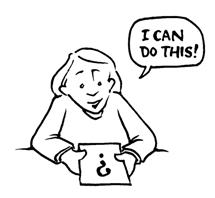 Are proactive in solving the problem.
Are proactive in solving the problem.
|
Give up easily.
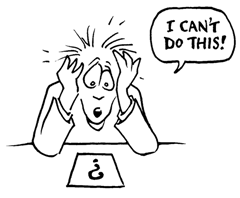 Lie back and hope a solution will occur.
Lie back and hope a solution will occur.
|
| Actions |
Ask themselves and others questions.
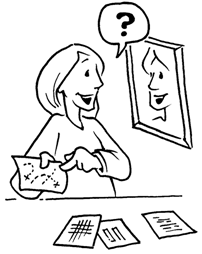 Reread the problem several times.
Reread the problem several times.
Redescribe the problem.
Don't jump to conclusions.
Create a mental picture.
Draw sketches; write equations.
|
Are passive in their approach to finding a solution.
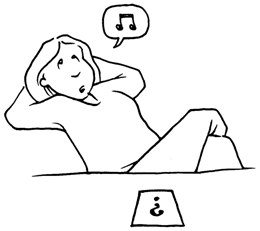 Do not reread the problem.
Do not reread the problem.
Cannot redescribe the problem.
Jump to conclusions.
Are not actively involved in the solution.
do not draw sketches or write equations.
do not draw sketches or write equations.
|
| Solution Procedures |
Keep track of their progress.
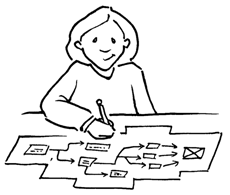 Break the problem into subproblems.
Break the problem into subproblems.
Start at a point they first understand.
Use a few key fundamental concepts as building blocks.
Use heuristics.
Persevere when stuck.
Use quantitative formulas and descriptions.
|
Don't know where to start.
 Don't break the problem apart.
Don't break the problem apart.
Fail to identify key concepts.
Guess.
Use no special format.
Quit.
Do not use quantitative formulas and descriptions.
|
| Accuracy |
Check and Recheck.
 Validate assumptions.
Validate assumptions.
|
Do not check.
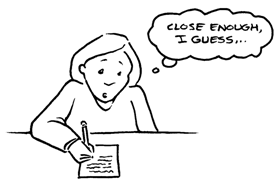 Don't bother to validate assumptions.
Don't bother to validate assumptions.
|
| 2. Closed-Ended Problem Algorithm on How to Guess the Number of Jellybeans in a Jar |
top
|
Closed-Ended Problem Algorithm:
Jelly Beans
Problem Statement: How many jelly beans will fit in a cylindrical jar 10 inches high and 8 inches in diameter?
ATTITUDE
This is a fun problem that may prove useful in the future for winning a guessing contest.
ACTIONS
Re-describe the problem:
What is the volume of the jar and what is the volume of a jelly bean and what is the packing factor (i.e., what is the volume fraction of the jelly beans in the filled jar... remembering there will be some empty space between the beans)?
Assumptions:
Assume the jelly beans are spheres.
Sketch the system:
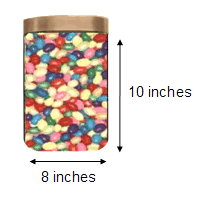 SOLUTION PROCEDURE
SOLUTION PROCEDURE
Identify:
Knowns
Jar height (H= 10 inches) and jar diameter (D=8 inches).
Jelly bean diameter (d=0.5inches)
Unknowns
Solid Fraction (the fraction of the jar volume occupied by beans, not including
the void space between the beans).
Fundamentals:
| Volume of the cylinder |
= |
π(D2/4)H in3 |
| |
= |
3.1416*((82)/4)*10 |
| |
= |
502.6 |
| Volume of one jelly bean |
= |
π(D3/6) in3 |
| |
= |
3.1416*(0.53/6) |
| |
= |
0.0654 |
| Look up the solid fraction of spheres packed together. It is ~0.65. |
| Volume of Beans |
= |
(Jar Volume)*(Solid Fraction) |
| |
= |
502.6*0.65 |
| |
= |
326.7 in3 |
| Number of Beans |
= |
(Volume of Beans)/(Volume of One Bean) |
| |
= |
(326.7 in3)/(0.0654 in3 per bean) |
| |
= |
4,995 beans in the jar |
ACCURACY
Check and Recheck:
Explore the effects of cylindrical beans rather than spherical beans.
Check the jelly bean dimensions.
If beans are cylindrical (D = 0.5in, H = 0.5in), redo the calculations.
| Volume of one jelly bean |
= |
π(D2/4)*H |
| |
= |
3.1416*(0.52/4)*0.5 |
| |
= |
0.0982 in3 |
Look up the solid fraction of cylinders packed together in jar. It is ~0.67. |
| Volume of Beans |
= |
(Jar Volume)*(Solid Fraction) |
| |
= |
502.6*0.67 |
| |
= |
336.7 in3 |
| Number of Beans |
= |
(Volume of Beans)/(Volume of One Bean) |
| |
= |
(336.7 in3)/(0.0982 in3 per bean) |
| |
= |
3429 beans in the jar |
The true number of jelly beans in the jar is probably between the two figures, since the beans are not truly spheres or cylinders, but this technique gives us a bracket that the true answer lies between.
| 3. The Tuckman Model for the Stages of Team Development |
top
|
Tuckman identified four stages of team development: forming, storming, norming, and performing.
Just as a child crawls before walking and then running, teams go through maturation stages before they become an effectivey functioning unit.
If members are aware of these stages of team development, the team will be less likely to flounder and become frustrated during the initial, more chaotic phases.
Forming
In this stage, members of the group are polite to each other. Team members introduce themselves and get to know one another.
Little tangible work is accomplished as people get to know each other. In this stage, they should agree on group goals and establish ground rules.
Team members have an initial discussion of the project they have been assigned. There is great excitement and expectations are high.
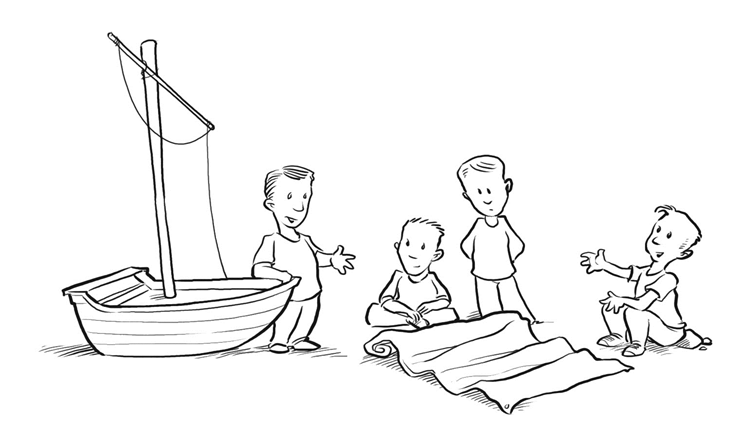 Storming
Storming
As work on the project continues, a general state of chaos typically develops. Team interactions are characterized by a lot of talking, little listening, no common vision, and very little progress. The team should realize that this stage is a common phase teams go through and should not be discouraged. Disagreements will certainly occur. However, the team needs to develop strategies for encouraging constructive controversy and respect- ing differences of opinion. The team must work hard to establish an atmo- sphere that supports robust dialogue and disagreement.
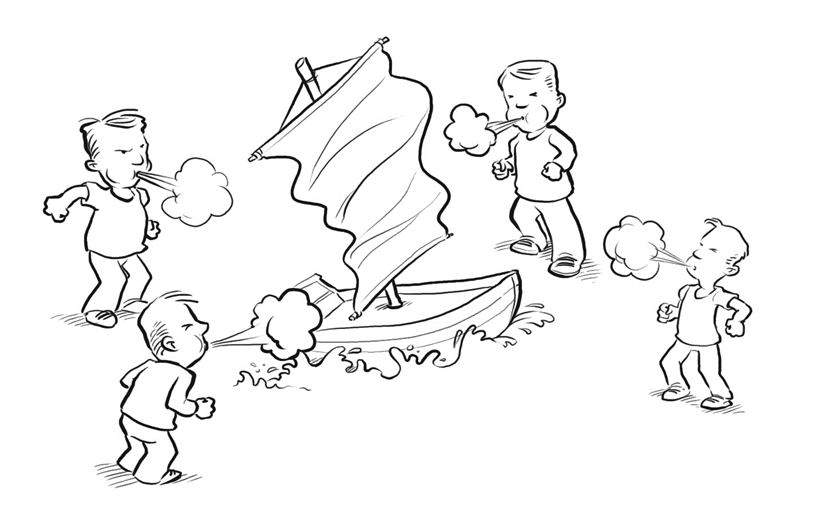 Norming
Norming
In this stage, group members accept and appreciate the differences of individuals, learn to productively work through conflict and focus on the task at hand.
The team gels and develops a common vision.
This stage is characterized by good communication between team members as tasks are identified and mapped into a timetable.
The risk of "group think" may be encountered if individuals "go along" with ideas to maintain harmony rather than introduce differences of opinion.
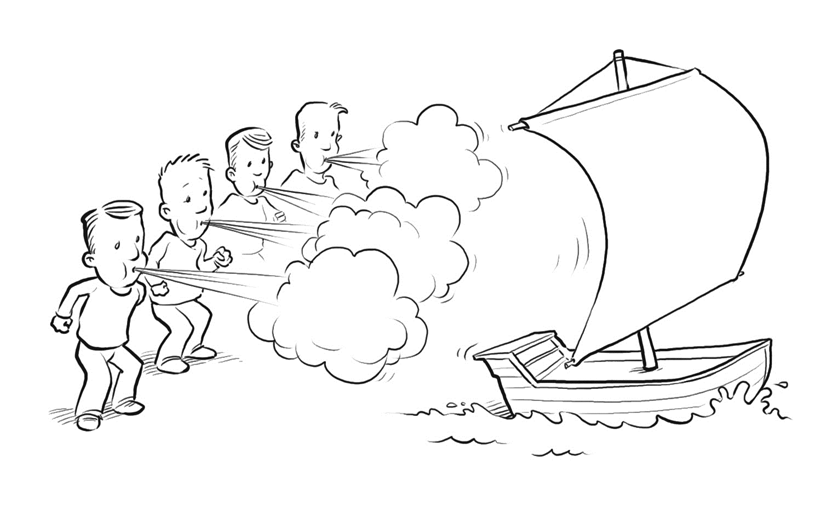 Performing
Performing
In this final stage, the team makes progress in achieving the objectives and goals.
Creative brainstorming is fostered, and ideas rather than personal agendas are debated.
The team takes collective pride in their work and produces their final product.
During this stage:
- Team members agree on goals
- Creative brainstorming is fostered
- Ideas, rather than personal agendas, are debated
- The team takes collective pride in their team accomplishments

| 4. Establishing a Creative Team Environment |
top
|
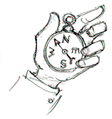 |
"Don't give people goals; give them directions (i.e., roughly aim them)." |
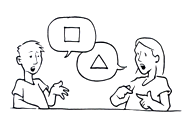 |
"Encourage contrarian thinking." Dissent stimulates discussion, prompting others to make more perceptive observations. It ultimately influences decision making for the better." |
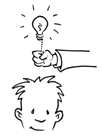 |
"Build a textured environment to extend not just people's aspirations but their sensibilities." You can't buy creativity, but you can inspire it. Creative people require an atmosphere conducive to thinking in nonstandard ways. The work environment needs to be informal and relaxed." |
 |
"Build emotion into the system." Defensiveness is the bane of all passion-filled creative work. One way to keep defenses down is to encourage problem-finding as well as problem-solving. The world is moving so fast that problems are being created all the time. The people who can find them have tremendous powers of creative observation." |
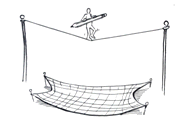 |
"The safer you make the situation, the higher you can raise the challenge." The workplace should be safe, so that the workers are not afraid to take risks and make mistakes, but the standards should be set high." |
 |
"Encourage accountability over responsibility." Traditional responsibilities, like punching a clock from nine to five, can inhibit creativity. Instead, people should be made accountable for the results of their work." |
 |
"Getting ordinary people to reach beyond themselves and do extraordinary things can be the result of establishing a nurturing creative environment." To establish this type of atmosphere requires the reconciliation of traditional corporate attitudes with more iconoclastic entrepreneurial attitudes. If this fine line can be traversed without abandoning the very characteristics that have led to a company's success in the past, much progress can be made." |
Courtesy: Sculley, John and John A. Byrne, Odyssey: Pepsi to Apple... A Journey of Advertising Ideas and the Future, Harper & Row, New York, 1987.
Below are the:
- Top Ten Faults of Executives
- The Ten Most Used Excuses in the Workplace
- Ten Commandments for Losing
| Top Ten Faults of Executives† |
top
|
- Failure to see other person's point of view - 68 percent.
- Failure to show appreciation and give credit - 36 percent.
- Failure to size up employees correctly - 34 percent.
- Lack of leadership -24 percent.
- Lack of frankness and sincerity - 19 percent.
- Arbitrariness - 17 percent
- Arrogance - 17 percent.
- Failure to delegate authority 17 percent.
- Indecision - 15 percent.
- Bias and letting emotions rule - 15 percent.
Miscellaneous: lack of courtesy, sarcasm, jealousy, nervousness, losing temper, etc. - 21 percent.
The following list gives the top ten reasons a job or task was not successfully completed.
†"Tips on how to win, lose and not to excuse," by Bob Talbert, Detroit Free Press, February 9, 1995.
| The Ten Most Used Excuses in the Workplace |
top
|
- I forgot.
- No one told me to go ahead.
- I didn't think it was that important.
- Wait until the boss comes back and ask him.
- I didn't know you were in a hurry for it.
- That's the way we've always done it.
- That's not in my department.
- How was I to know this was different?
- I'm waiting for an OK.
- That's his job - not mine.
| Ten Commandments for Losing |
top
|
- Quit taking risks - play it safe.
- Be content with what you are doing.
- Before making any moves, ask what your predecessors would have done.
- Rely totally on research and experts to make decisions for you, not your gut feelings.
- Once you have a formula for success, never change it.
- Always hide your mistakes.
- Concern yourself more with status than service, more with image than production.
- Concentrate on your competitor more than on your customer.
- Put yourself first and listen only to yes men and women.
- Have a "that's good enough" attitude.
| 6. The Key Is Listening to Your Customers |
top
|
An article in the New York Times (reprinted in the Detroit Free Press, p. B1, January 3, 1993) states that a major reason consumers have defected from purchasing automobiles from G.M. is because they compare the key entry system and the key ignition of the G.M. car with that of a Toyota car. The G.M. cars require two keys: one that can be used only for the car door and the trunk while the other one can be used only for the ignition. The idea behind this development is that you could allow someone to drive your car without jeopardizing the safety of the trunk's contents. In addition, the keys would work only if they were inserted right side up. The annoyance of such a system becomes acute when fumbling for the right key and right key alignment while trying to enter a locked car with a bag full of groceries, or a bundle of packages, which fall to the ground as a result of the fumbling.
In the mid-1970s, Toyota introduced a single key that unlocks the door, trunk, and glove compartment and starts the ignition. In addition the key could be inserted with either side up. This innovation was followed by other Japanese auto makers. However, more than 15 years later, G.M. has yet to adopt the idea and is not even considering it, now or in the near future. This paradigm paralysis exists despite research that shows customers prefer a single key. This example is not the only time G.M. has been caught in paradigm paralysis and resisted innovation. Other examples cited were resistance to seat belts, air bags, advanced engines, and transmissions. We believe that the principles and examples brought forth in this book will develop a customer awareness along with a set of problem-solving and decision-making skills that will develop creative responses to customer needs.
| 7. How to Run Effective Meetings |
top
|
Most problem-solving activities will require interaction with other people, either one-on-one or in group meetings. Meetings are essential tools for team problem solving. They should be carefully planned and skillfully run to realize the maximum benefit from them. The abbreviated list of guidelines shown below will help team meetings be fruitful activities rather than time wasters!
From: Robert R. Patton, Solving Group Interaction, Harper & Row, New York, 1973 and
Marvin E. Shaw, Group Dynamics, McGraw-Hill, New York, 1976.
- Prepare and distribute an agenda prior to meetings and stick to it.
| Meeting Agenda for 8/9/15 |
| 1. Open Meeting |
| 2. Approve Minutes |
| 3. Comments from the Chair |
| 4. Committee Reports |
| 5. Old Business |
| 6. New Business |
| 7. Set Next Meeting |
| 8. Adjourn |
- Start on time and end on time
- At your first meeting, introduce yourselves, and give a little background. Set the group norms and expectations (e.g., showing up on time for meetings, responsibilities).
- Appoint a leader who will inspire the group to high levels of performance and be an effective listener.
- State why the group has come together.
- Bring all your materials (such as problem statement, group notes, handouts, your work, etc.) to all the meetings.
- Keep the discussion focused.
- Be courteous, listen effectively
- Be careful with criticism, and criticize only ideas not people
- Encourage participation
- Have someone in charge of keeping the meeting on track.
- Appoint a "devil's advocate" to challenge ideas as they arise.
- Have someone take minutes to remind participants of decisions made, actions to be taken.
- Draft an agenda for the next meeting, identifying what is to be covered and who is responsible for it.
The importance of meetings and positive group interactions cannot be overemphasized. For the problem-solving process to function smoothly, group members must get along. In many instances, the success of the project will depend upon how well people communicate and interact with one another.
Researchers asked several thousand people, "What are the most serious faults of executives dealing with their associates and subordinates?" These top ten faults are shown below



















